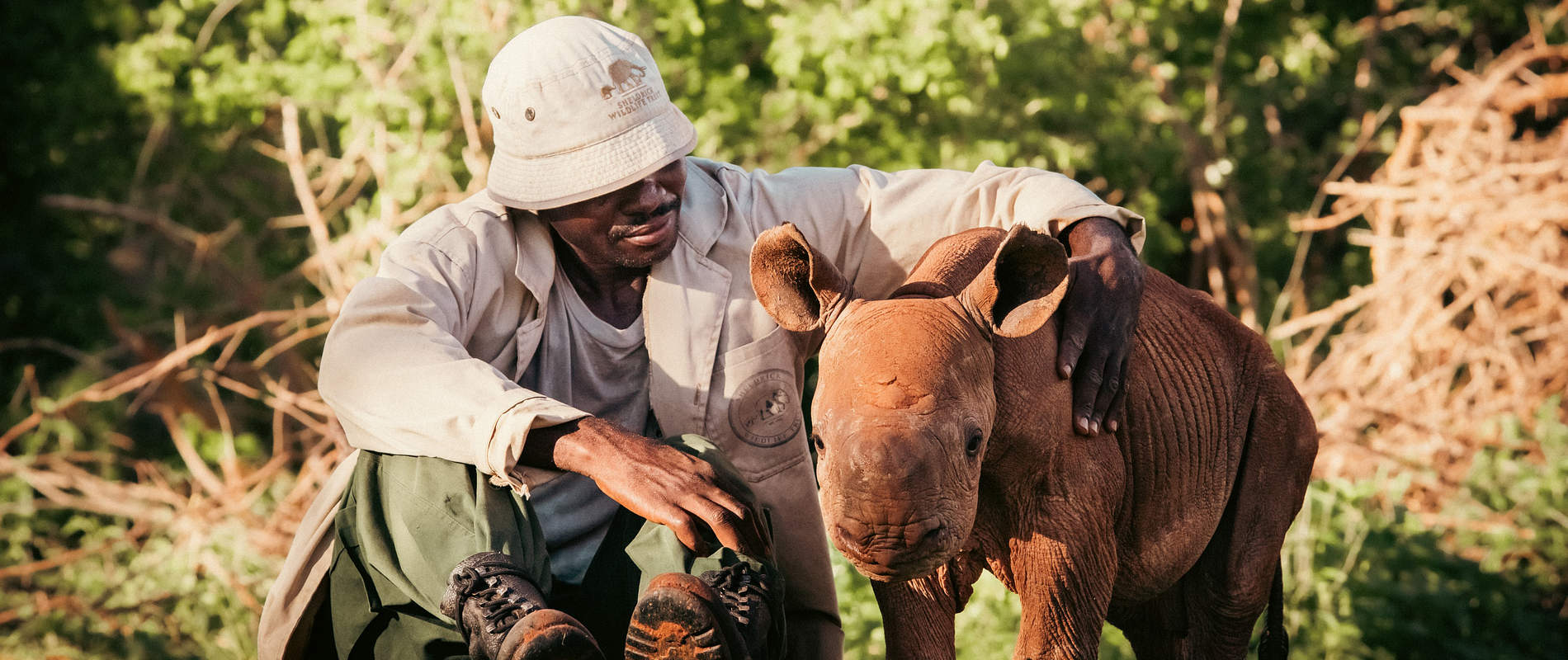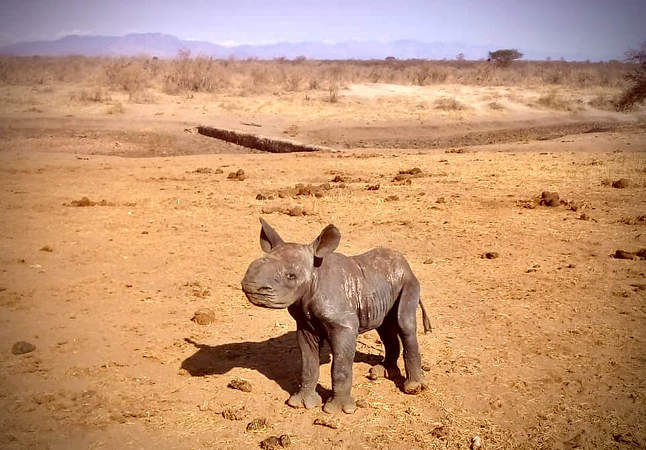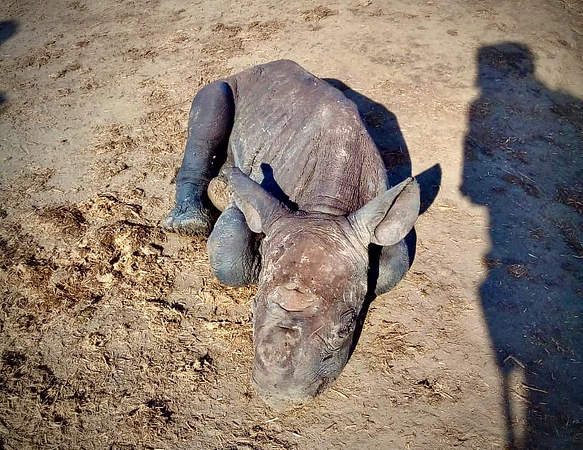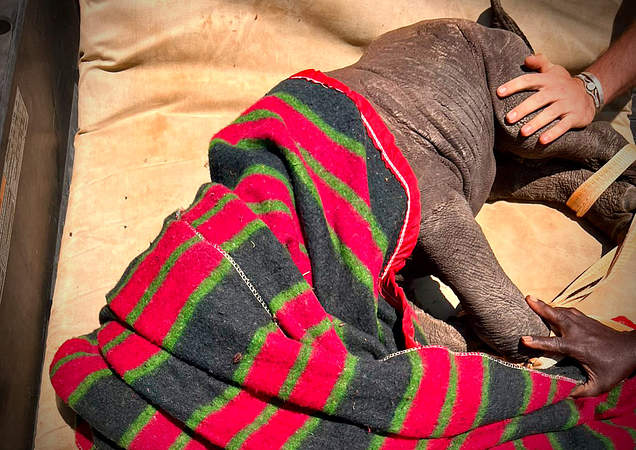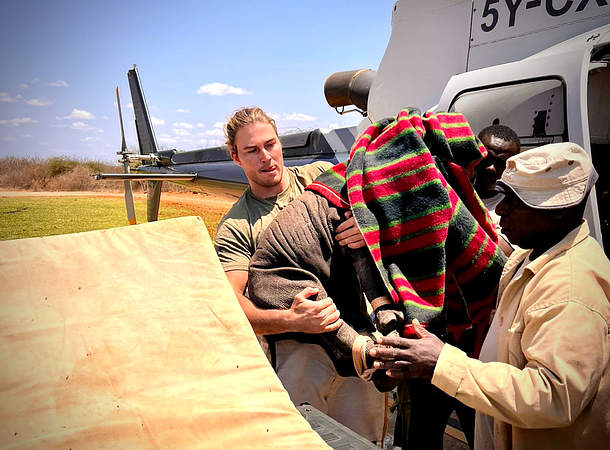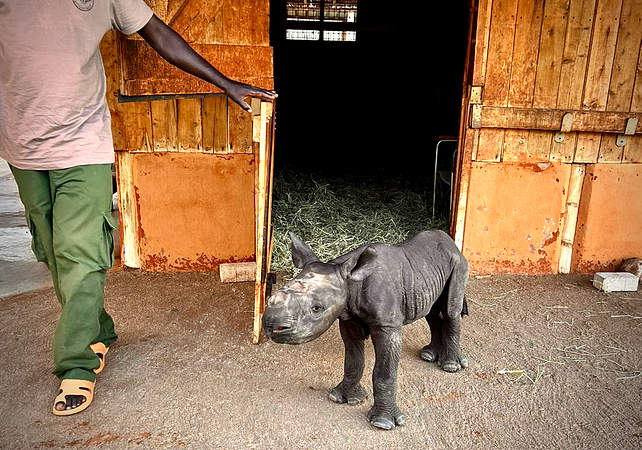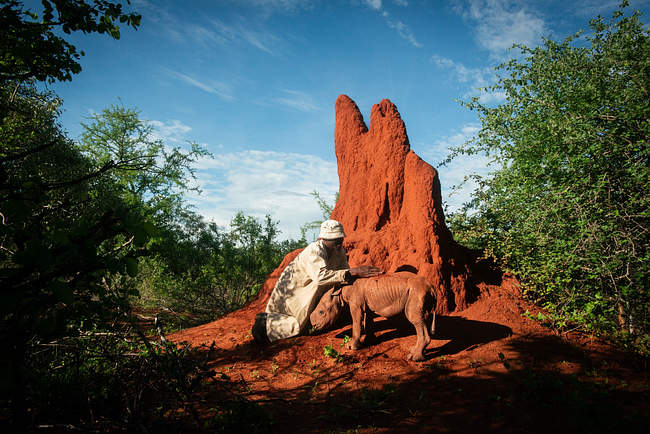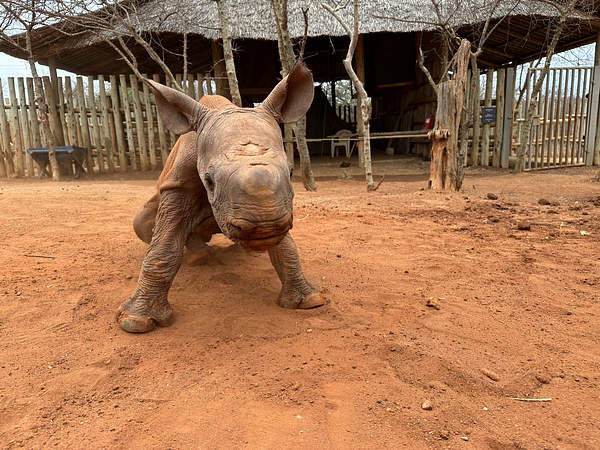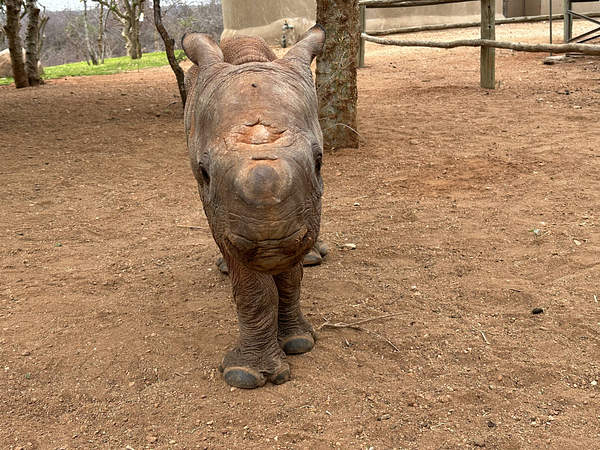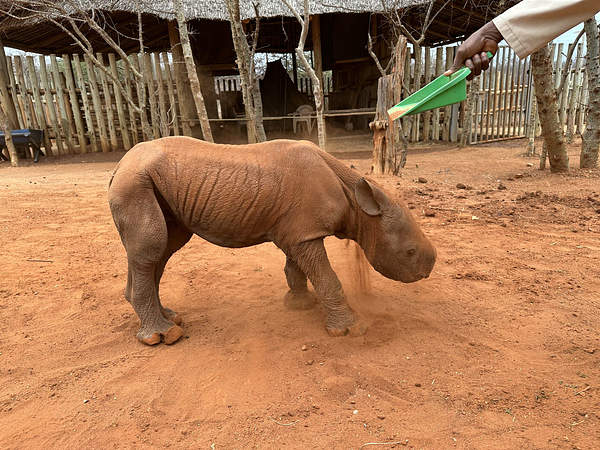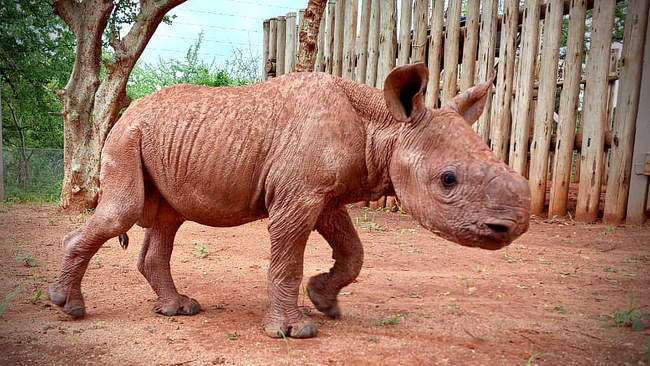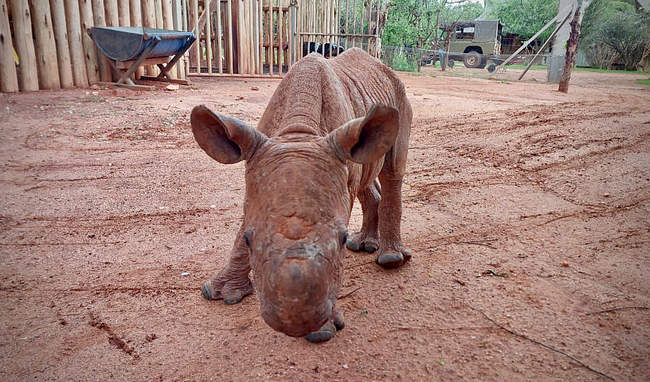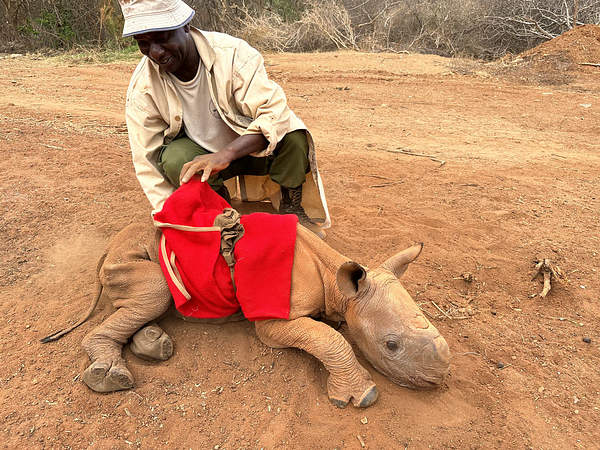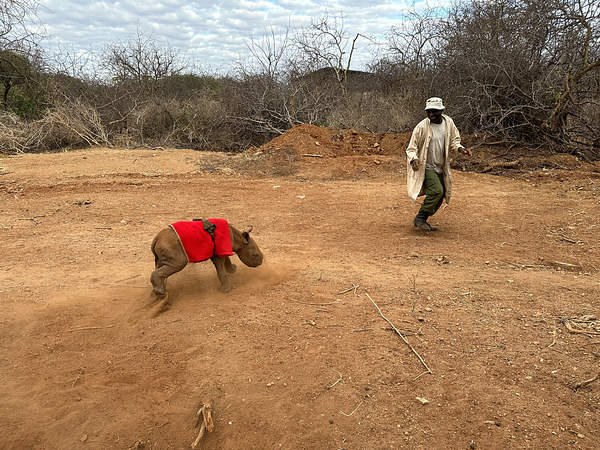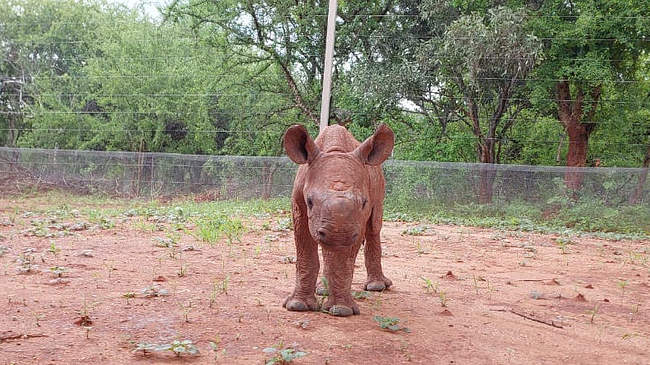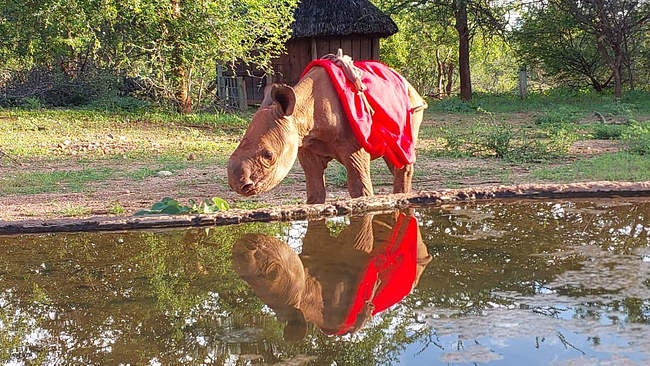Orphaned as a newborn, Chamboi is a symbol of resilience for a species with a very fraught history. On the afternoon of 6th September 2023, KWS and Tsavo Trust rangers spotted a newborn rhino calf on his own by a waterhole. He was located in the free release rhino range of Tsavo West National Park, which is home to a healthy population of black rhinos. However, his mother was nowhere to be found.
Once upon a time, black rhinos flourished across the African continent. Beginning in the 1970s, however, the relentless threat of poaching decimated the species. In Kenya, black rhinos suffered a catastrophic 98 percent population decline between 1970 and 1983, plummeting from 20,000 to just 350 individuals in just over a decade.
Thanks to dedicated conservation efforts, black rhinos have begun to make a tentative comeback. Kenya has emerged as a stronghold for the species and is now home to well over 950 black rhinos. While they remain critically endangered, every new life serves as a beacon of hope.
We have a few working hypotheses as to why Chamboi was orphaned. Given that he was born in very dry and challenging conditions at the time, it is possible that he was intentionally abandoned by his mum, because she knew that she would struggle to produce ample milk. Otherwise, he was born premature — given his diminutive size, this is a very real possibility — and couldn't nurse. It is also possible that an amorous bull set his sights on the new mother, and the baby was abandoned in the melee.

Whatever happened, Chamboi was alone and terribly vulnerable. In fact, it was a miracle that hyenas, jackals, or other predators hadn’t already snatched him. He had obviously been on his own for a significant time, as he had started to become hypoglycemic and shaky. It was clear without sustenance and rapid attention he would die.
At the request of KWS, the SWT helicopter flew to the scene and started conducting aerial patrols of the landscape, attempting to find the orphan’s mother. However, after several hours of searching yielded no results, it was clear that a rescue was in order.
Because Chamboi is a rhino of Tsavo, we brought him to our Kaluku Neonate Nursery, located in the ecosystem. We named him after a mountain peak in Tsavo West National Park, to forever connect him to his birthplace.
Chamboi embraced Kaluku life from the outset. He was just a day old when he was rescued, so for all intents and purposes, we are the only family he has ever known.Within a few weeks, the once-frail calf blossomed into a real character, huffing, puffing, and charging around with exuberance.

Rhinos love rituals, and Chamboi is no different. In echoes of baby Apollo, he loves to prop his mattress over himself like a tent, echoing an instinctive connection to the shelter his lost mother would have provided. Building off Apollo’s dung piles, we started to carve out a new territory for the young rhino.
Of course, it was not all smooth sailing. Because he was orphaned at such a young age, Chamboi never had his mother’s colostrum. For a long time, we battled with a litany of stomach issues. Fortunately, he helped himself and was always a strong feeder.

Although Chamboi is growing up alongside a herd of orphaned elephants, Twiggy the giraffe, and an assortment of other orphans, he mostly keeps to his own beat. Rhinos are solitary by nature, and it is important that he has a healthy respect for different species. For Chamboi, life is all about his Keepers. He has embraced them as his surrogate parents, following them with a heart-warming loyalty and adoration. His days are filled with long walks, leisurely mud baths, midday sleeps, and afternoon plays.

